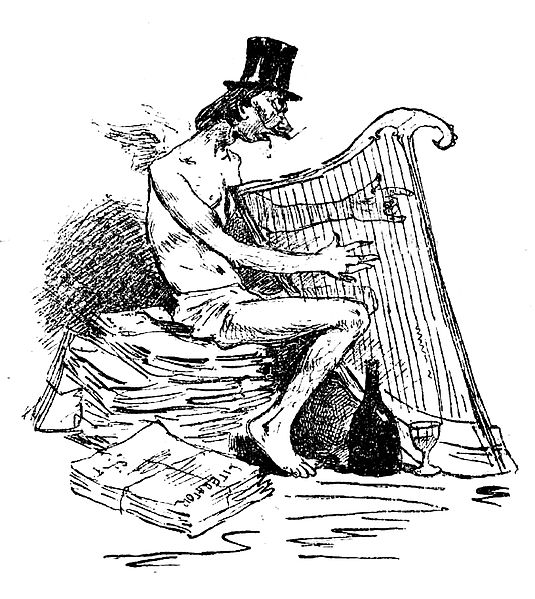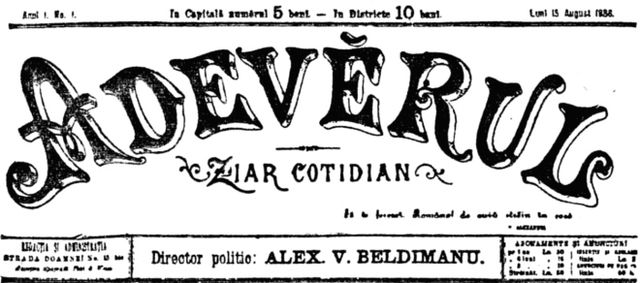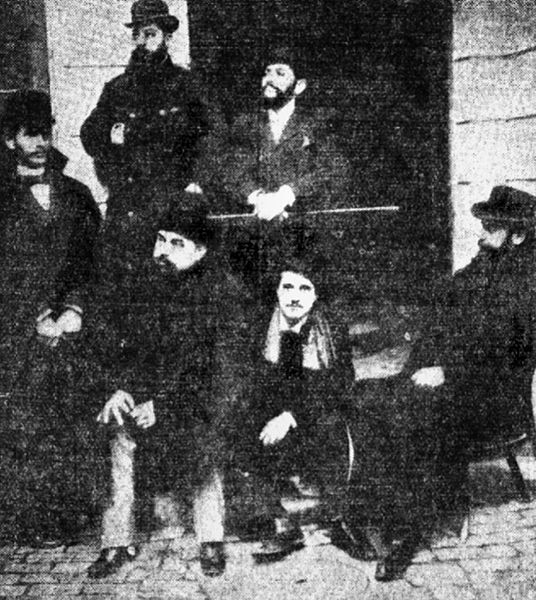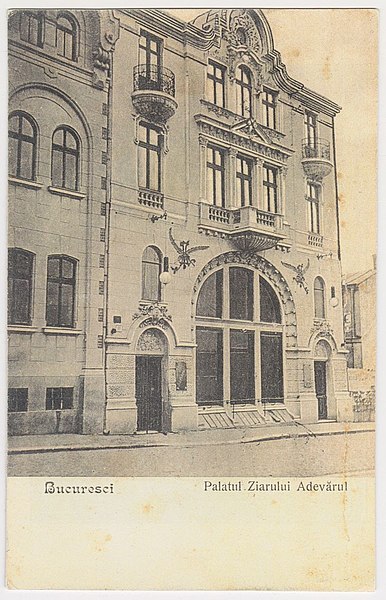Anton Costache Bacalbașa was a Romanian political journalist, humorist and politician, chiefly remembered for his antimilitaristic series Moș Teacă. Together with his brothers Ioan and Constantin, he entered public life as a republican and socialist militant. For a while, his career was intertwined with that of Marxist doyen Constantin Dobrogeanu-Gherea, who inspired in him the idea of a socialist art addressed to the masses. He was himself a popularizer of Marxist ideas, and one of the first Marxist intellectuals in Romanian political history.
Photograph of Bacalbașa, ca. 1890
An 1892 gathering at Sotir, with Constantin Mille (holding his two daughters), Vasile Morțun and Constantin Dobrogeanu-Gherea seated in the foreground. Toni, in the white hat, is standing behind Morțun, holding him by the shoulder. Alexandru Ionescu and C. Z. Buzdugan are reclining in front of them. Also pictured, first from the left in the same row, is poet Artur Stavri. Simion Sanielevici, Henric Streitman, Henric Sanielevici, Ion Păun-Pincio are among those standing in the bottom row
"The Symbolist poet", as portrayed by Moftul Român cartoonist Constantin Jiquidi
PSDMR propaganda in the magazine Lumea Nouă, 1895. The female figure represents social democracy, and the red flag is marked Proletarians of all countries, unite!
Adevărul is a Romanian daily newspaper, based in Bucharest. Founded in Iași, in 1871, and reestablished in 1888, in Bucharest, it was the main left-wing press venue to be published during the Romanian Kingdom's existence, adopting an independent pro-democratic position, advocating land reform, and demanding universal suffrage. Under its successive editors Alexandru Beldiman and Constantin Mille, it became noted for its virulent criticism of King Carol I. This stance developed into a republican and socialist agenda, which made Adevărul clash with the Kingdom's authorities on several occasions. As innovative publications which set up several local and international records during the early 20th century, Adevărul and its sister daily Dimineața competed for the top position with the right-wing Universul before and throughout the interwar period. In 1920, Adevărul also began publishing its prestigious cultural supplement, Adevărul Literar și Artistic. By the 1930s, their anti-fascism and the Jewish ethnicity of their new owners made Adevărul and Dimineața the targets of negative campaigns in the far right press, and the antisemitic Octavian Goga cabinet banned both upon obtaining power in 1937. Adevărul was revived by Barbu Brănișteanu after World War II, but was targeted by Communist Romania's censorship apparatus and again closed down in 1951.
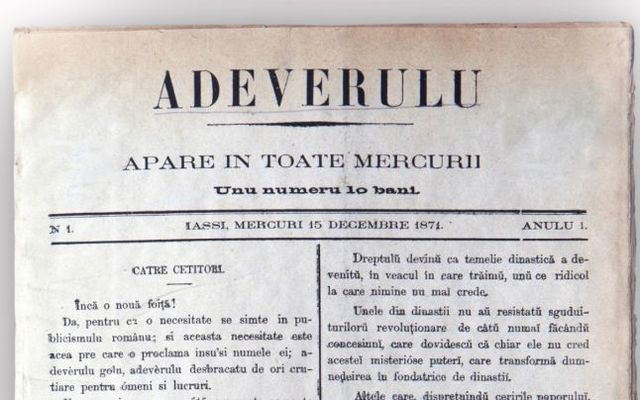
The Adeverulu published in Iași (front page of the first issue in the 1871 series).
First version of the Adevĕrul logo (front page of the first issue in the 1888 series). A similar version was used in the early 1990s (Adevărul, in light blue, with identical typeface).
Adevărul editors in 1897. Constantin Mille is first seated from left. Standing behind him are Ioan Bacalbașa (middle) and Constantin Bacalbașa (right)
Adevărul headquarters (1898) on Constantin Mille (then Sărindar) Street in Bucharest, designed by architect Ștefan Ciocârlan, with a Beaux-Arts facade showing slight Art Nouveau influences



